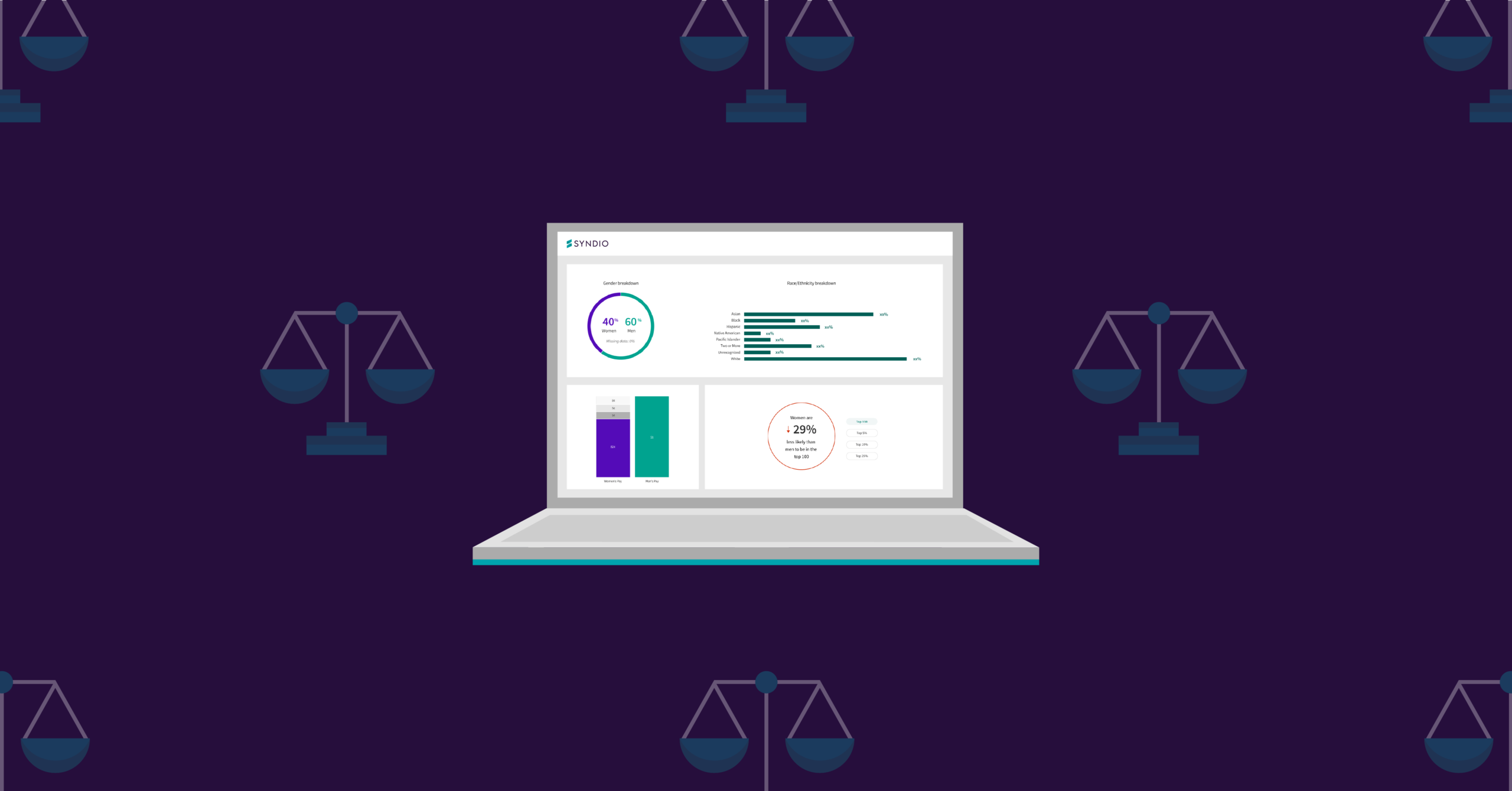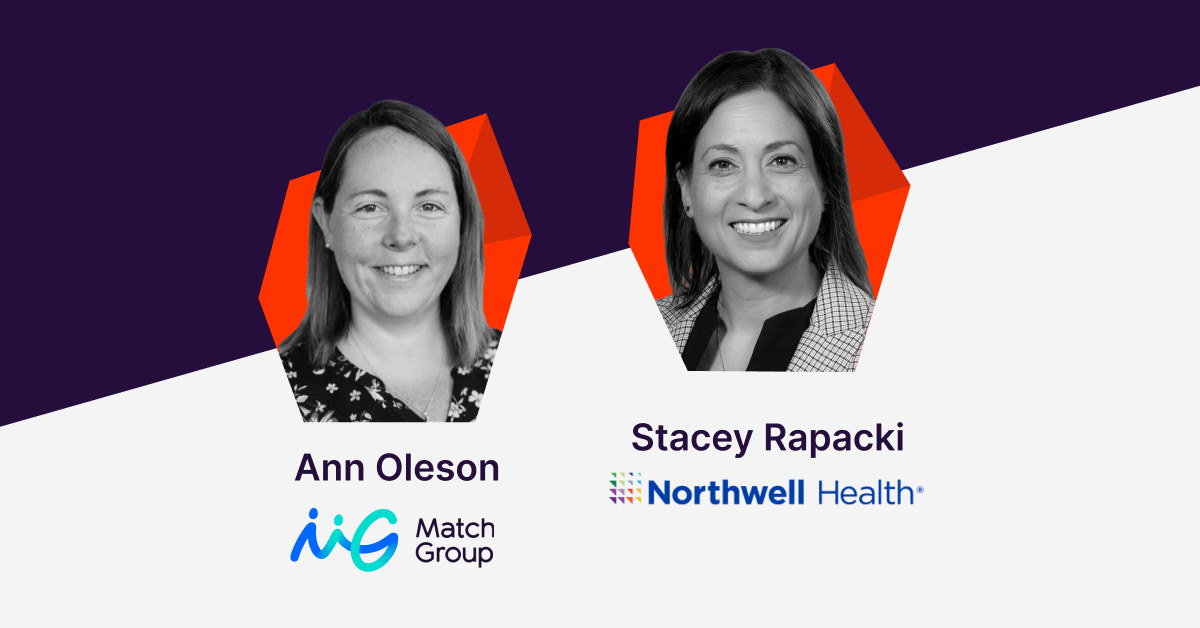$100 million. $118 million. $175 million. These headline figures from recent pay equity settlements make it clear that pay equity issues can really hurt business — and that current approaches to pay equity aren’t working.
And it’s not just lawsuits putting pay equity in the spotlight for enterprise companies: expanding pay transparency legislation, social impact ESG reporting, and demands from boards, investors, employees, job seekers, and consumers are all applying pressure.
Research shows that 58% of U.S. employees would consider switching jobs for more pay transparency, 85% of Americans believe it is important for companies to conduct pay analyses, and 51% of global consumers believe CEOs need to make gender and ethnic pay equality a higher priority.
Nobody wants to be the next enterprise in the hot seat (or the latest cautionary tale)as stakeholders put increased scrutiny on pay equity and insist on proof of progress.
But despite these heightened expectations and risks, the traditional solutions — a manual, one-off analysis performed in-house or with law and consulting firms — isn’t getting the job done. Because they are approached as backward-facing audits, they simply don’t have the agility or capability to prevent inequities from cropping up again and again.
Enter pay equity analysis software, a SaaS solution designed to build lasting fair pay in the workplace. Here are the top nine reasons enterprises are choosing pay equity software over traditional approaches.
1. Pay equity analysis software is faster — much faster.
It takes an average of two to five months to complete a manual pay equity audit. The timing is out of your control because you are beholden to the vendor’s schedule and workload.
A pay equity review isn’t linear, it’s iterative, and you’ll typically need to find and address outliers and complexities in your data. Without software, every time you adjust a group or control, you have to wait days or weeks for your team or firm to re-run the analysis and see the impact of your changes.
That makes for an easy business case for pay equity solutions: All that time adds up to a hefty invoice when you are paying by the hour.
With pay equity analysis software, you can perform unlimited iterations to dial in your groups and controls — and since every adjustment is done with a click of a button, you’ll be able to see the impact of changes instantaneously.
2. Pay equity solutions provide ongoing views and insights.
Because manual, annual analyses take a long time, the results are usually outdated before they’re even done. And they’re static, so you’re always looking backwards at stale data from a single snapshot in time. That makes them virtually useless for correcting pay inequities in the long run.
But fairness shouldn’t happen just once a year. The best way to make progress around fair pay is to look at pay equity frequently. Pay equity analysis software provides a baseline that lets you assess pay equity any time: quarterly, monthly, after a merger, layoff or hiring spree, or whenever someone — an employee, a board member, an executive — asks a question about pay equity.
Wouldn’t it be nice to have a current and accurate view of pay equity at your fingertips, every day of the year?
3. It makes pay equity analyses easier.
Since legacy tools such as spreadsheets weren’t purpose-built for pay equity analyses, they require a lot of manual workarounds to get the job done.
In comparison, pay equity software provides a host of features that make analyses easier and more accurate. For example, pay equity software can automatically identify outliers, toggle between currencies, make data corrections on the fly, and so much more.
4. It’s more secure.
How do most vendors and law firms run pay equity analyses? Well, first you send them your most sensitive compensation and employee data. Then they stick it into a spreadsheet where they maintain control of it. Scary, right? Last we checked, most spreadsheets don’t have single sign-on (SSO), user-based permissions, or seamless integrations with your company’s HCM or HRIS. Pay equity software does, giving you end-to-end control of your data.
But wait, there’s more. Pay equity anslysis software mitigates the risk of incurring costly legal fees in the event of a lawsuit. This is because when you use spreadsheets, every time you make a change and rerun your analysis the results are generated in a fresh, new file. This creates a paper trail of potentially inaccurate pay equity analyses that can be used against you in a pay equity lawsuit.
One Fortune 200 brand spent hundreds of thousands of dollars in legal fees trying to get prior iterations of their analysis thrown out. Wouldn’t it be better to have no trail at all until you’re 100% satisfied with your analysis, which is the case when using pay equity analysis software? We think so.
5. It puts you in control.
Rather than handing your data off for analysis inside a “black box” that provides little visibility into the “why” or “how” of your results, pay equity software allows you to explore your data with self-serve insights. Because the advanced math and methodology required to run an airtight pay equity analysis are baked into the platform itself, you require less outside expertise and therefore have more control over your analyses. And unlike human-powered approaches, software doesn’t make computational errors, so you can trust the results.
Leading pay equity software companies also provide training and certification, helping your staff gain new skills that puts you at the forefront of pay equity. But know this: Even if you use pay equity analysis software, you can still work with outside counsel and maintain privilege. The software helps simplify, accelerate, and optimize the process so you can focus on corrective actions.
6. It’s an end-to-end solution.
The pay equity process doesn’t stop once you run the analysis — in fact, that’s only the beginning. If you find inequities, you need to resolve them. That means budgeting for them in a way that most efficiently mitigates risk, ensures fair pay, meets your business objectives, and corresponds to your pay policies and rules. Pay equity software provides sophisticated budgeting tools built into the platform so you can efficiently spend every remediation dollar where it matters the most. There is no one-size-fits-all approach to making pay adjustments.
One place where Syndio’s Workplace Equity Platform stands out is its ability to give you options to create the best remediation plan. Want to make sure that low performers are not given mixed signals and exclude them from getting an adjustment? No problem! Want to set a ceiling and a floor for adjustments? No problem! Want to ensure that folks above the max of the range do not receive an adjustment? No problem! The Syndio platform is customizable.
You also need to report your progress to key stakeholders. Pay equity software provides dashboards, data visualizations, and easy reporting tools to help you share your pay equity progress with executives, board members, and, when needed, government agencies.
7. It helps you get ahead of the problem.
What’s better than finding and fixing pay inequities? Never having them to begin with. One-off, annual analyses, by design, will always be an exercise in futility for anyone wanting to solve unfair pay since they identify disparities after they’ve developed and grown throughout the year.
Because pay equity software empowers organizations to conduct more frequent pay equity analyses, it becomes a powerful tool to prevent inequities from happening. It lets you test hypotheses and proactively analyze pay adjustments before you roll them out, so you don’t just attain fair pay, but maintain it as well.
Syndio’s leading software also has advanced root cause analytics and on-demand recommendations for equitable starting salaries and promotions, ensuring fair pay from day one and every day after.
8. It goes deeper than manual pay analysis.
Many traditional pay equity analyses are limited in scope, focusing on just one or two aspects of the employee population, like gender or race, rather than all aspects and intersectionalities. They also often analyze only on base compensation, not total compensation.
Pay equity software makes it easy to slice and dice your data however you want. Do you collect employee data on LGBTQ+ identity, disability, veteran status, and more? You can analyze pay equity by those groups. Want to look at bonuses and equity/stock? You got it.
9. It benefits from ongoing development.
The field of pay equity, and overall workplace equity, is continually maturing with new data, studies, surveys, and best practices, as well as evolving legislation and regulations. As a cloud-based solution, pay equity analysis software is always being enhanced and improved with new functionality to help companies keep up with changing legal requirements and evolving priorities. That means the platform you invest in today will support your fair pay goals in the long term.
How to go further than fair pay
Equitable pay is only one piece of the puzzle when it comes to a fair workplace. While pay equity analyses help you get a handle on your company’s pay inequities, your median pay gap can persist without interventions around equitable opportunity and representation.
Syndio’s Workplace Equity Platform provides companies with the full toolset needed to measure and improve all facets of workplace equity — from reducing pay gaps to hiring, promoting, and retaining employees equitably.
Want to see how Syndio’s pay equity software stacks up to traditional approaches, such as law firms and consultants?



